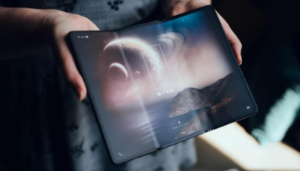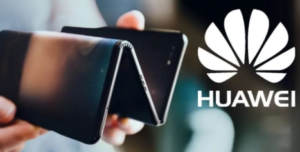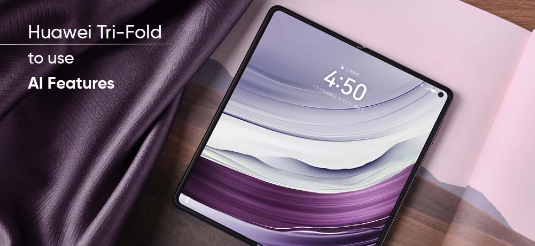Huawei is once again making headlines with the launch of its groundbreaking trifold phone, the Mate XT, which has already racked up over 3.5 million preorders. As the Chinese tech giant takes aim at Apple’s dominance, it faces a significant hurdle—its chip technology is still lagging behind the competition, a weakness that could hinder its long-term success.
Despite recent advancements, Huawei’s chip manufacturing capabilities remain two to three years behind the cutting edge, according to Martin Yang, a senior analyst at Oppenheimer & Co. The company’s inability to access processes below 7 nanometers, a critical factor in chip performance, has widened the gap between Huawei and its competitors. In contrast, Apple is already leveraging its second-generation 3-nanometer chips, which offer a 10% to 15% performance boost over last year’s models.

The stakes are high for Huawei as it attempts to regain market share in China, the world’s largest smartphone market. Last year, the company made a significant breakthrough with the release of its Mate 60 smartphone, featuring an advanced 7-nanometer chip produced domestically. This achievement surprised many analysts, given the stringent U.S. trade restrictions that have limited China’s access to advanced semiconductor technology. However, for its latest release, Huawei has not announced any major chip innovations, which could be a cause for concern as it battles Apple for supremacy.
Instead of focusing on its chip technology, Huawei is likely to highlight the Mate XT’s unique trifold design, positioning it as the first of its kind in the market. While this strategy may generate buzz, industry experts like Yang remain skeptical about the device’s long-term sales potential. The Mate 60 RS, released last year, also saw strong initial reservations but failed to translate those numbers into significant market share.
Navkendar Singh of the International Data Corporation pointed out that while Huawei leads in the foldable smartphone market, this segment remains niche. High prices and concerns over functionality continue to limit consumer adoption. As Huawei pushes forward, the company’s ability to overcome its chip technology deficit will be critical in determining whether it can truly challenge Apple’s dominance.
Huawei’s battle against Apple is far from over, but with its chip technology still lagging, the road ahead is fraught with challenges. The success of the Mate XT could hinge not just on its innovative design, but on Huawei’s ability to close the technological gap and deliver a device that can compete on all fronts.

Huawei’s Chip Technology: A Closer Look
Huawei’s chip manufacturing has been significantly hampered by U.S. trade restrictions, which have cut off the company’s access to advanced semiconductor technologies from key suppliers like TSMC (Taiwan Semiconductor Manufacturing Company) and other American firms. As a result, Huawei has had to rely on domestically produced chips that lag behind the latest industry standards.
The critical difference lies in the transistor size on the chips. Apple’s current A-series processors for the iPhone are produced using a 3-nanometer process, which is the most advanced in the industry. In contrast, Huawei’s most recent chips are manufactured on a 7-nanometer process, which, while impressive under the circumstances, still falls behind in terms of power efficiency, performance, and the ability to support next-generation applications like AI and high-speed 5G connectivity.
The Foldable Market: Huawei’s Niche
Huawei has positioned itself as a leader in the foldable smartphone market, a segment that remains niche but is rapidly growing. The global foldable smartphone market is expected to reach 27.6 million units by 2025, growing at a compound annual growth rate (CAGR) of 21.3% from 2021 to 2025, according to a report by Counterpoint Research.
Huawei’s foldable phones, such as the Mate X series, have consistently pushed the envelope in terms of design and innovation. However, foldable devices still face challenges in durability and price, with most models priced well above $1,500, making them inaccessible to many consumers. Additionally, concerns over the long-term reliability of foldable screens continue to deter potential buyers.
Market Share and Sales Projections
In terms of market share, Huawei has been losing ground globally due to the U.S. sanctions, dropping from its once-dominant position in the global smartphone market. However, in China, Huawei has managed to reclaim some of its lost market share, particularly in the premium segment, thanks to strong nationalistic sentiments and the appeal of its cutting-edge designs.
According to the China Academy of Information and Communications Technology (CAICT), Huawei captured around 30% of the premium smartphone market (phones priced above $600) in China in Q2 2024, a significant rebound from previous quarters.
Competition with Apple
Apple remains Huawei’s most formidable competitor, especially in the premium smartphone segment. Apple’s iPhone, with its seamless integration of hardware and software, continues to dominate the high-end market. The introduction of the iPhone 15 series, featuring the new A17 Bionic chip built on a 3-nanometer process, underscores Apple’s technological leadership.
In addition to chip technology, Apple’s ecosystem of devices and services gives it a competitive edge. Features such as iCloud, Apple Music, and the App Store create a sticky ecosystem that keeps users loyal to the brand, making it difficult for competitors like Huawei to lure them away.
Global Implications of Huawei’s Strategy
Huawei’s success or failure in the foldable market and its ability to overcome chip-related challenges have broader implications for the global tech industry. As the U.S. continues to restrict China’s access to advanced semiconductor technologies, Huawei’s efforts to innovate within these constraints could influence the future of global tech competition, particularly in areas like AI, 5G, and mobile computing.
Moreover, Huawei’s struggle highlights the ongoing technological rivalry between the U.S. and China, with semiconductor technology being a critical battleground. How Huawei navigates these challenges could set the stage for future developments in the global tech landscape.






